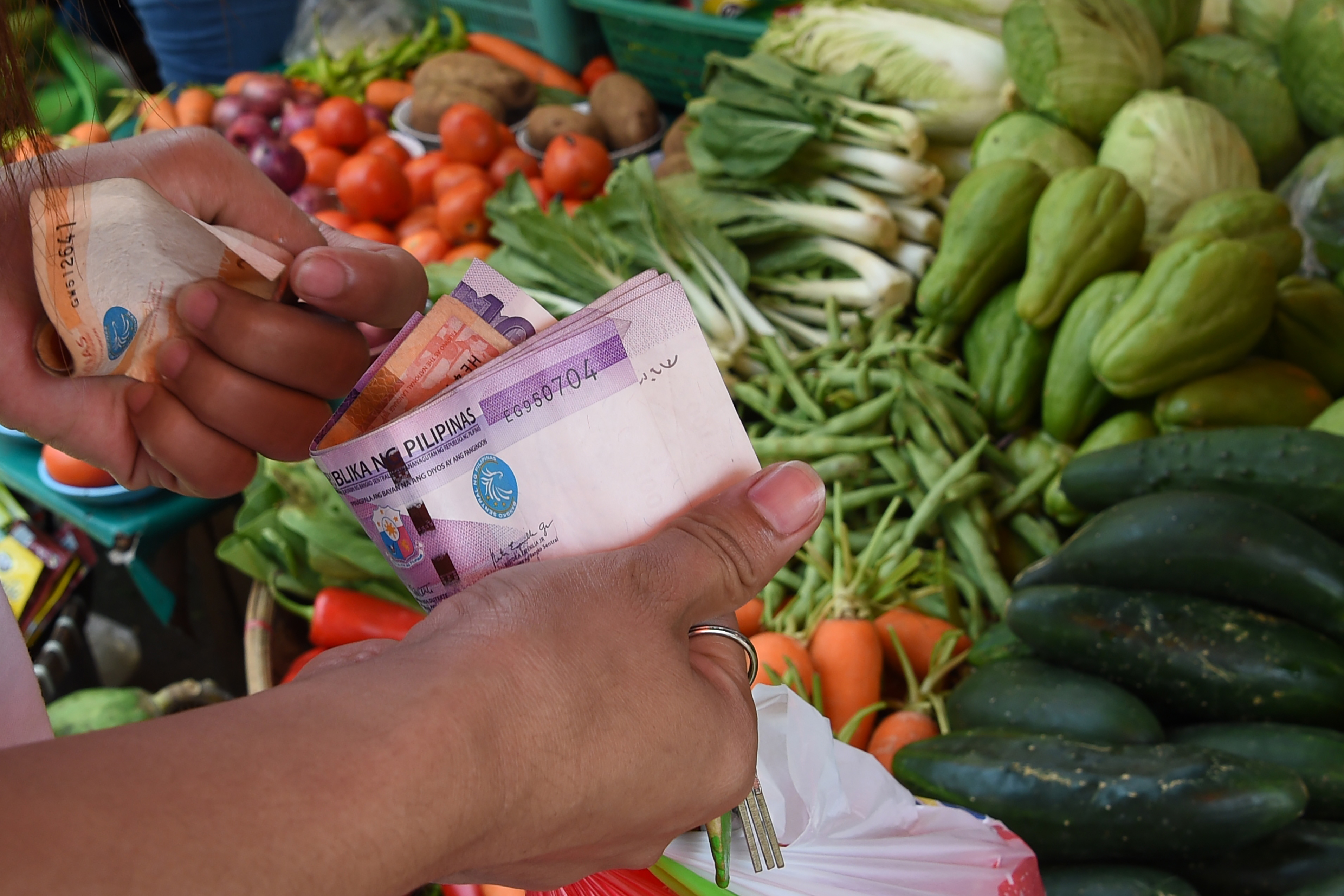
A customer buys vegetables at a market in Manila on October 5, 2018. – Philippine inflation has risen for a ninth straight month in September, to a near-10-year high, the government said October 5, in an unexpected challenge for President Rodrigo Duterte. (Photo by TED ALJIBE / AFP)
Domestic inflationary pressures — which made local consumer prices accelerate to their fastest levels in almost a decade in recent months — seem to be abating and may, in turn, make the central bank pause from its rate hike streak when its policy makers convene next month.
In a research note to clients, ING Bank senior economist Nicholas Mapa said that recent declines in food prices together with lower utility rates and pump prices bode well for the Philippines’ inflation outlook, and predicted that the rise in the October consumer price index would be capped at only 6.5 percent.
“Government officials have sounded off recently on the increasing likelihood that domestic inflation had indeed peaked in [the third quarter], pointing to recently implemented non-monetary and monetary measures that have begun to take root,” he said.
The central bank has, so far, raised local interest rates by a total of 150 basis points in four successive adjustments since May, after initially predicting that price hikes would abate by the fourth quarter of 2018 or early 2019, at the latest, without need for any policy intervention.
“The fruits of such measures are now being reflected on the ground, validating our earlier expectation that inflation had peaked in September, affording [the Bangko Sentral ng Pilipinas] some leeway to pause at its November meeting,” Mapa added.
His view jibes with that of government economic managers who have pointed out that the September inflation rate of 6.7 percent, though marking a nine-year high, saw a lower monthly increase from August’s 6.4 percent — a possible indication of an emerging plateau in prices that may develop into a downtrend moving forward.
Mapa said the normalization of supply chains after super Typhoon Mangkhut coupled with the government’s efforts to augment supply and improved distribution “has been felt on the ground” with the latest official data from the Philippine Statistics Authority validating this development.
A price drop of P1 was recorded for regular milled rice across seven out of the 17 regions with the average week-on-week decline at 0.5 percent, he noted. Meanwhile, prices for meat and fish were broadly stable while substantial declines were reported for vegetables such as carrots (-40 percent), native pechay (-50 percent), cabbage (-50 percent) and white potato (-12.5 percent).
“Aside from food, utility costs are also pulling back with Meralco lowering October charges while motorists have welcomed successive weeks of hefty pump price rollbacks,” the economist said. “All these positive developments increase the likelihood that inflation has peaked in the third quarter with the October print seen to settle at roughly 6.5 percent year-on-year.”
Because of this, he said that risks to the inflation outlook now appear more balanced with upside pressure drawn from transport fare adjustments in November coupled with the projected minimum wage hike slightly higher than BSP’s assumption for its current 2018 and 2019 inflation forecast.
Balancing these risks is downside pressures from the National Food Authority’s plan to fast track an additional 703,000 metric tons of rice via government-to-government deals to augment supply of the all-important staple going into the holiday season.
“If declining crude oil prices continue their trend, normalizing pump prices and utility rates, together with favorable base effects will all factor into a decelerating trend for inflation towards end-2019,” Mapa said. /kga